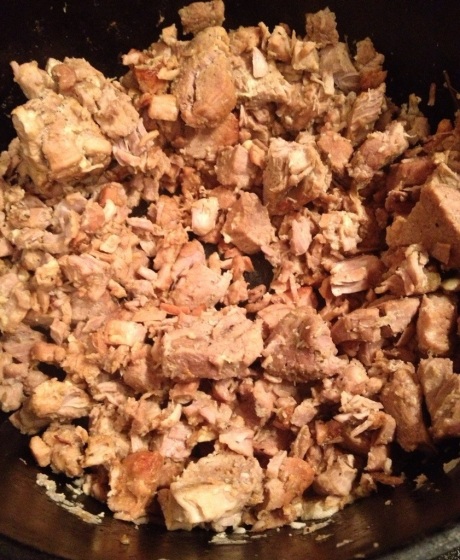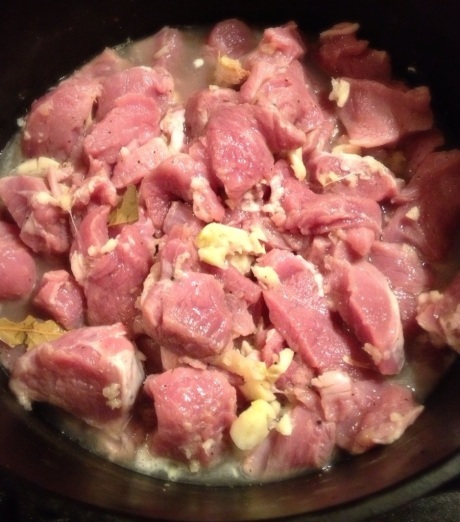Filipino food gets a bad rap because presentation is always problematic.
“What’s in that bowl there? It looks like a glop of vegetables.”
“Hey, what’s that meat dish? Are you feeding your dog at the table, too?”
Yah, unfortunately, the delicious flavors of this unique hybrid cuisine (Chinese, Spanish, American), and given that much of their cuisine seems to be based on traditional preservative elements like salt, soy sauce, and vinegar, well…stews are a typical descriptor for much of what ends up on the table. Which is all quite a shame because the food, at its best, is delicious with succulent sauces, unusual flavor combinations, and surprises, too.
Alas, this post won’t do anything to improve on that perception.
I’m preparing Adobong Bisaya, presumably an adobo which is ‘typical’ for the Visayan islands and how they usually prepare their adobo. You have no idea how hilarious that notion is. I got this recipe from a small cookbook The Adobo Book: Traditional and Jazzed-Up Recipes. Over 200 pages of recipes, each quite different, but…if you’re honest, there are some basics to cooking Filipino adobo, and believe me, not everybody will agree even with this list:
– pork is best
– simmer on looow heat
– there must be salt to balance the acids
– laurel or bay leaves
– garlic
– eat it the following day for best flavors
There are more, but if you follow those basic rules, you should have a passable adobo which might impress half the staff at any nursing station at your local hospital.
This recipe has pork tenderloin, crushed garlic, coconut vinegar, bay leaf, water, salt and pepper. It is on the stove and has boiled, and will continue to cook for two hours, simmering on a low heat.
A quick peek shows that after 20 minutes, the meat is definitely cooking, but as there is no soy sauce, its interesting to note that there is little browning going on–no brown stain to note. We’ll check it again later.
Hmm. Here’s how it got started. Up at the top is the result. It was short of two hours, but as the liquid, vinegar and water, was all absorbed or evaporated, I did need to add more water throughout the two-hour process. Still, it looks good.
Bottom line? The pork was fully cooked, tender, and nicely shredded, but very bland and lacking any real flavor, which I suspect was a result of having followed the directions to cook it for two hours…which to prevent it from burning should have had more liquid from the beginning. Hence, adding just water probably diluted it considerably. I should have simply added more vinegar as well.
The meat is still good, but I’ll probably just add some BBQ sauce or Mexican flavorings to it and make tacos.


Not a fan of Adobo but I ‘d like to try that…